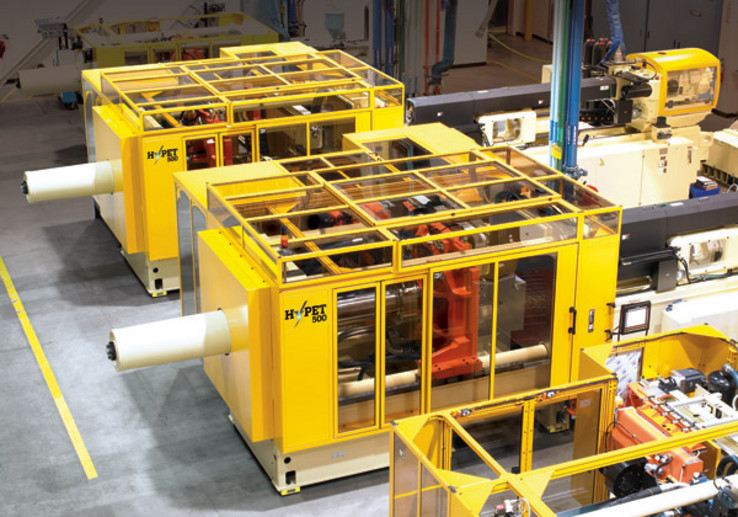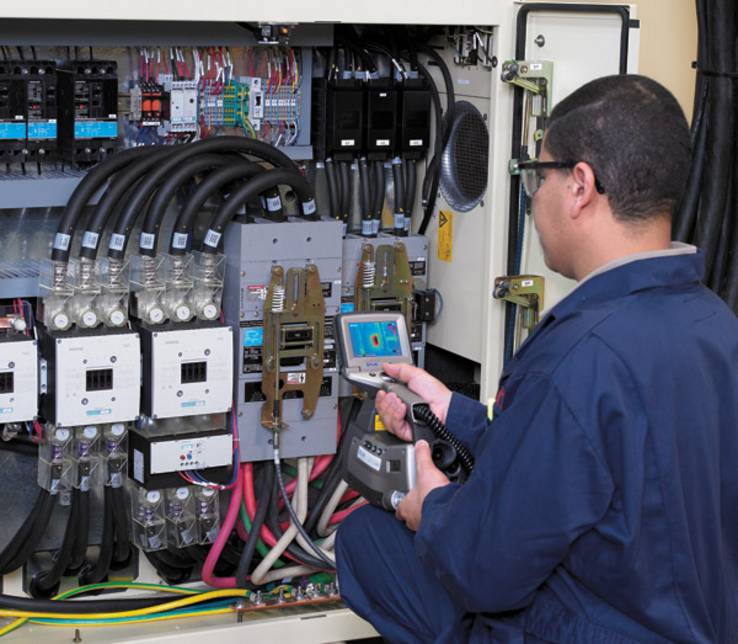Leverages EPLAN upgrade for major productivity enhancement
Husky, a world leader in the manufacture of injection molding machines for the global plastics industry, is challenging the perception that an OEM has to switch from only a non-ECAD system to EPLAN to capture major benefits.
Husky, a world leader in the manufacture of injection molding machines for the global plastics industry, is challenging the perception that an OEM has to switch from only a non-ECAD system to EPLAN to capture major benefits. By upgrading from EPLAN 5 to EPLAN Electric P8, Husky has undertaken to streamline its electrical design processes for huge efficiency and output quality gains. The company plans to eventually integrate EPLAN, along with mechanical engineering, into its Teamcenter PLM environment for even greater design efficiency. Canadian leader in injection molding
Husky is a Canadian success story. The company that began as a small machine shop in a Toronto garage in 1953 has grown into a multinational manufacturer of machinery to mold plastics. Customers use Husky equipment to manufacture plastic products such as bottles and caps for beverages, containers for food, medical components, and consumer electronic parts. Its manufacturing facilities are located in Bolton, near Toronto, the United States, China and Luxembourg. The electrical engineering departments from all four locations have access to a pool of EPLAN licenses on Husky’s RDS server. Migration to EPLAN Electric P8 We have developed an easy button. We simply press the easy button and EPLAN automatically processes many laborious tasks. Everybody is quite happy with the results, says Craig Fleetwood, the lead EPLAN user at Husky. Ideal platform for accelerating automation
Shortly after Craig Fleetwood joined the company in Bolton just over three years ago, the new EPLAN Electric P8 was launched. Fleetwood, now the EPLAN coordinator at Bolton, saw it as blending the best of the old EPLAN 5 and EPLAN 21 design programs while adding new functionality in a database-driven package, making it the ideal vehicle for a major upgrade of design automation. He promoted a threephase program which broke the project into three achievable steps. Phase 1, the migration to Electric P8, was launched in 2007 and involved training all engineers on the software, including Fleetwood’s group doing order fulfillment. As the master schematics were transferred to P8, navigator tools provided new insight for electrical model structures, enabling Husky to create clean and consistent results. Another valuable P8 feature is the window macro which enables several macros to appear on one schematic page. This dramatically reduced the total number of master macro pages and increased the visibility of how different macros relate on the same page. Using the electrical schematics generator developed with EPLAN’s API programming interface, standard schematics packages that used to take 40-70 hours to create can now be produced in minutes. Centralizing documentation has benefits
Phase 2, now underway, is where the major payoff begins. Codenamed Macro Flex, this phase is centralizing all electrical design tasks in EPLAN. Husky has a number of automation tools outside EPLAN used to process each order. Each of these tools generates a specific document: bill of materials, wire list, cable list, etc. “But they are all separate documents and never really cross-reference each other and that has been a problem,” says Fleetwood. “Previously, if you made a change in one database, you would also have to make the adjustment somewhere else, so there was a lot of room for error,” he says. “Each of the tool outputs had different selection rules, so generating an engineering package with the correct schematic, correct BOM, correct wire list and correct cable list became a difficult task to setup and maintain. It was a tough job and this gave some gray hairs to a few people who have been maintaining that for a while. By bringing this data into EPLAN, we have one set of selection rules for our schematics with all crossreferenced BOM, wire list and cable data included. Therefore we have simplified our automation process tremendously.” Intelligent macros for varying designs
Another key automation gain of Phase 2 is the implementation of the placeholder feature of EPLAN Electric P8’s macro variant technology. Husky’s huge injection molding machines come in different sizes. Its popular HyPET line for manufacturing plastic preforms - an intermediate stage in making PET bottles – comes in seven sizes from 90 to 650 tons. The engineers use placeholders to scale the design up or down without re-doing all schematics and lists. The engineering data tables for all variants are stored within placeholders. The engineer inserts a placeholder in a macro wherever there is a variable element. Selecting the variant then generates all correct values such as parts, settings, cable and wire lengths. “Placeholders let us scale a macro automatically,” says Fleetwood. “As a result, we’ve condensed the number of macros to be maintained and still capture all of the variability to cover a complete product line, thus improving our efficiency and output quality.” Less data entry means greater reliability
As Phase 2 progresses, EPLAN is becoming second nature. There is less data to enter and fewer tools to master. Accuracy is improved because there is a single selection criteria for all data, a single output source as well as better control and change tracking. Project turnaround time is expected to shorten considerably. Other interesting features could be popular with a global OEM like Husky, such as the wire gauge flipper tool that allows for instant conversions from AWG (American Wire Gauge) to mm gauge and the translation module for translating project documentation from English to the languages of Husky manufacturers abroad. Towards fully automated fulfillment
Phase 3 is the eventual integration of all Husky configuration tools into the Teamcenter PLM environment. EPLAN will be an integral part of the company’s ultimate IT goal to create a completely automated full machine configurator in the PLM that salespeople can instruct to generate all schematics and documents for new orders, leaving the engineers to focus their energy on developing and improving products. We would never have gotten to where we are today with EPLAN 5,” says Fleetwood. “It tells you a lot about Electric P8. Summary: Husky Injection Molding Systems is a long-time EPLAN customer leveraging an upgrade from EPLAN 5 to EPLAN Electric P8 to streamline electrical engineering at its four manufacturing sites worldwide and integrate electrical engineering into its Teamcenter PLM. By having EPLAN automate the production of lists (e.g.bills of materials, cable lists and wire lists) that previously had to be compiled using several standalone configuration tools and by using tools in EPLAN Electric P8 like scalable macros, Husky has accelerated project workflows, greatly simplified its automation tools and dramatically increased the output quality to the manufacturing process.





